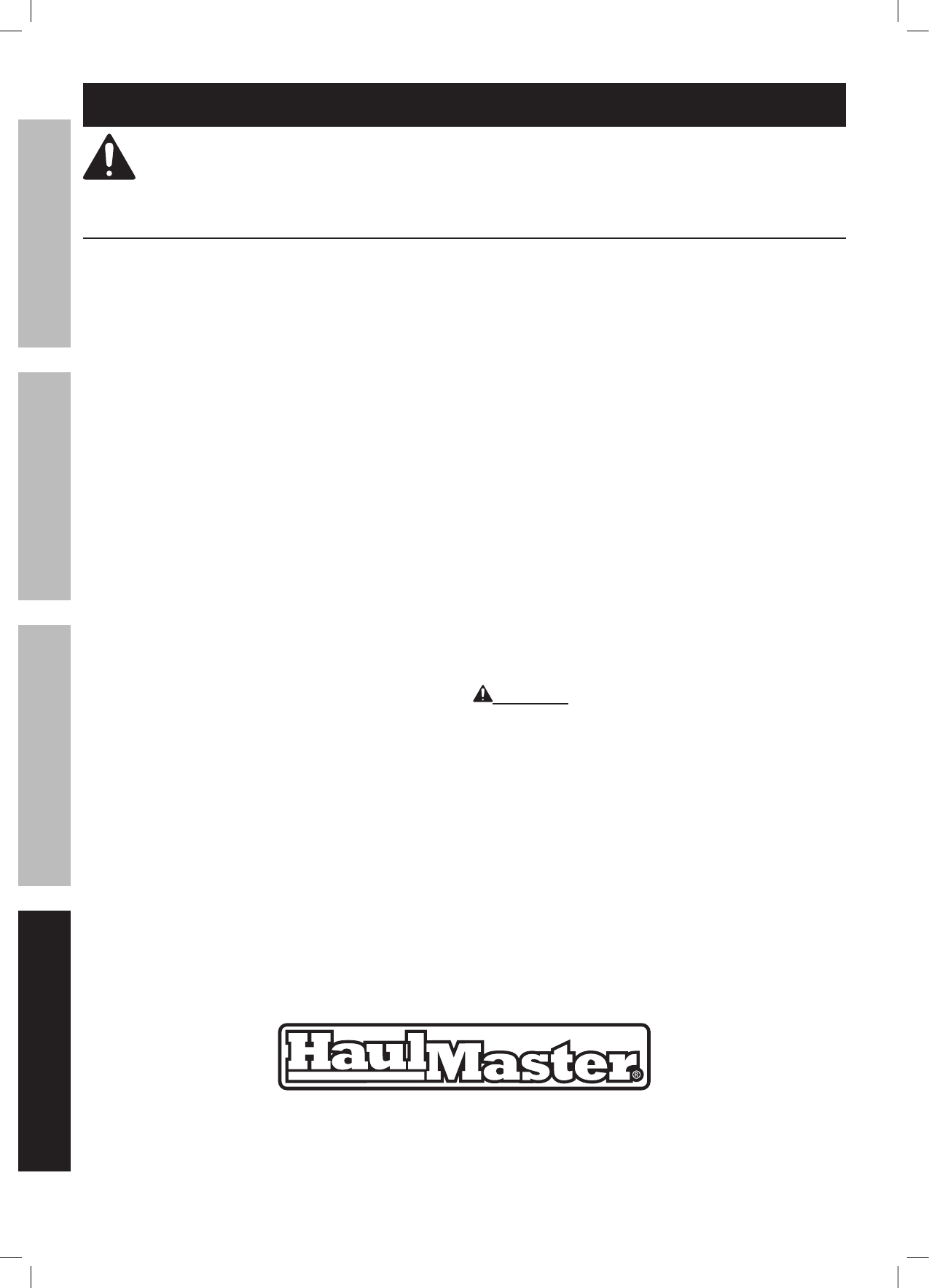
Page 8 For technical questions, please call 1-800-444-3353. Item 00996
Inspection, Testing, and Maintenance
Procedures not specifically explained in this manual must
be performed only by a qualified technician.
Frequent Inspection
Perform the procedures in this section BEFORE
INITIAL USE and AT LEAST MONTHLY. Inspection
is needed more often for heavily used hoists.
1. Check operating mechanisms for proper operation,
proper adjustment, and unusual sounds.
2. Frequent Braking System Inspection
The braking system must automatically stop and hold
up to the rated load if the hand chain is released.
3. Frequent Hook Inspection
a. distortion, such as bending, twisting,
or increased throat opening
b. wear
c. cracks, nicks, or gouges
d. latch engagement (if equipped)
e. damaged or malfunctioning latch (if provided)
f. hook attachment and securing means.
4. Frequent Hoist Load Chain Inspection:
a. Test the hoist under load in lifting and lowering
directions and observe the operation of the
chain and sprockets. The chain should feed
smoothly into and away from the sprockets.
b. If the chain binds, jumps, or is noisy,
first see that it is clean and properly lubricated.
If the trouble persists, inspect the chain and
mating parts for wear, distortion, or other damage.
c. Examine visually for gouges, nicks,
weld spatter, corrosion, and distorted links.
Slacken the chain and move the adjacent links to
one side to inspect for wear at the contact points.
If wear is observed or if stretching is suspected,
the chain should be measured as follows:
1) Select an unworn, unstretched length
of the chain (e.g., at the slack end).
2) Suspend the chain vertically under tension and,
using a caliper-type gauge, carefully measure
the outside length of any convenient number
of links approximately 12" to 24" overall.
3) Carefully measure the same number of
links in the used sections and calculate
the percentage increase in length.
4) If the used chain is 2.5% longer than
the unused chain, replace the chain.
5. Check rope or load chain reeving.
WARNING! TO PREVENT SERIOUS INJURY
FROM HOIST FAILURE:
Do not use damaged equipment.
If any defect or damage is noted, have the
problem corrected before further use.
SAFETY OPERATION INSPECTIONINSTALLATION














